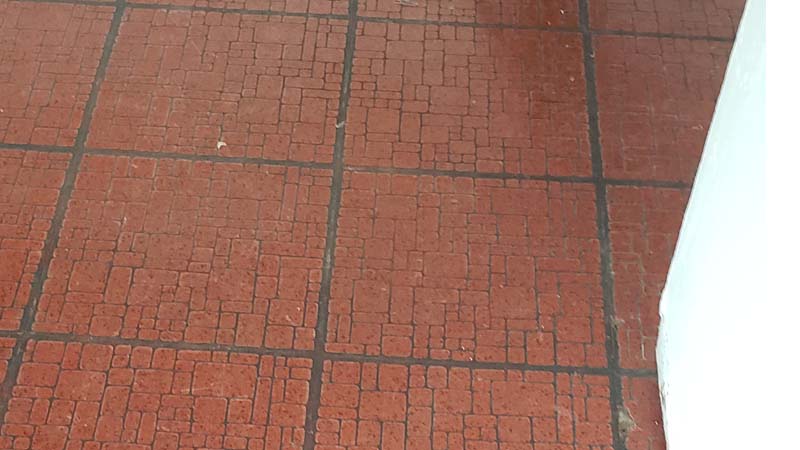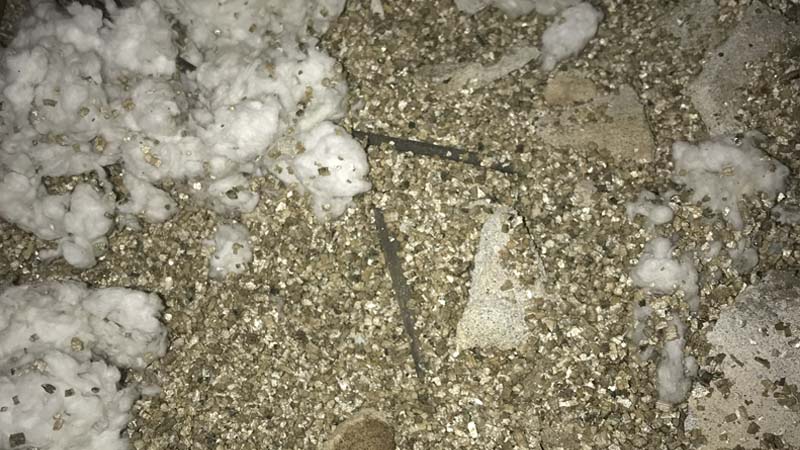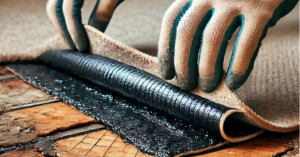TL;DR – Key Points:
- Homes built before 1970 have a higher chance of containing asbestos, especially in materials like popcorn ceilings, vinyl flooring, insulation, and cement asbestos siding.
- Never disturb suspected asbestos. If unsure, always contact a certified asbestos abatement professional for testing and removal.
- Asbestos abatement requires testing and certified removal. General contractors can face significant fines for illegal or improper removal.
- Plan for up to a 10-day wait period before abatement work can begin to ensure all proper notifications and permits are filed.
What is Asbestos and Why is it Dangerous?
Asbestos is a naturally occurring mineral used in building materials due to its heat resistance, strength, and fireproofing qualities. It was widely used in insulation, drywall, and other materials, especially in homes built before the 1970s.
However, asbestos poses severe health risks when disturbed, as its microscopic fibers can become airborne and inhaled, leading to serious conditions such as:
- Mesothelioma: A type of cancer that affects the lining of the lungs, heart, or abdomen.
- Asbestosis: A chronic lung disease caused by asbestos exposure.
- Lung Cancer: Asbestos exposure significantly increases the risk of lung cancer, especially for smokers.
Asbestos fibers are microscopic and can remain airborne for long periods, making them highly dangerous if released during home renovations or damage. It’s crucial to know where asbestos may be present in your home and to handle it safely with the help of professionals.
Key Areas Where Asbestos May Be Found in Your Home
Popcorn Ceilings (Textured Ceilings)
Homes built before the 1970s frequently used textured (popcorn) ceilings, which may contain asbestos. Despite regulations introduced in the 1970s, contractors continued to use asbestos-containing materials due to stockpiles.
- What to look for: Rough, bumpy texture on ceilings.
- Important note: Homes built after the 1970s may still contain asbestos in popcorn ceilings, so testing is always essential before disturbing the material.
Vinyl Floor Tiles and Adhesive
Vinyl flooring and its black adhesive commonly contain asbestos. Homes with layers of old vinyl tiles are particularly at risk.
- What to look for: Multiple flooring layers in older homes, with the bottom layer being more likely to contain asbestos.
- Important note: Both the tiles and adhesive may contain asbestos, so professional testing is necessary before disturbing the flooring.
Drywall and Joint Compound
Asbestos was sometimes added to drywall and joint compounds used to seal the seams between panels.
- What to look for: Visually, asbestos in drywall cannot be identified, so professional testing is essential.
- Important note: Even minor drywall renovations could disturb asbestos materials, posing a health risk.
Insulation
Vermiculite insulation, often found in attics, may contain asbestos and looks like small pebbles or kitty litter.
- What to look for: Vermiculite insulation in attics, particularly if layered beneath newer insulation.
- Important note: Asbestos-containing insulation must be removed by professionals to avoid airborne contamination.
Cement Asbestos Siding
Cement asbestos board was commonly used for siding due to its durability but becomes brittle over time.
- What to look for: Rigid, cement-like siding that cracks easily, indicating the presence of asbestos.
- Important note: Avoid drilling, breaking, or hitting asbestos siding as it can release fibers.




Why You Shouldn’t Disturb Asbestos
Asbestos-containing materials (ACM) are safe if left undisturbed. However, once materials deteriorate or are damaged, fibers can be released into the air. Disturbing ACM without professional help increases the risk of airborne contamination and can be extremely dangerous.
Important Note: Wearing a simple paper mask will not protect you from asbestos exposure. Proper respirators with HEPA filters are required to safely handle asbestos materials.
Can Homeowners Remove Asbestos Themselves?
Although legal in many places, DIY asbestos removal is strongly discouraged. Homeowners must follow the same stringent safety procedures as certified professionals, which includes wearing proper protective gear, setting up containment areas, and using specialized tools.
- Safety Procedures: Homeowners must use full-body protective suits, respirators with HEPA filters, and seal off the area with plastic sheeting to prevent contamination.
- Specialized Equipment: Professionals use HEPA-filtered negative air machines and wet removal techniques to minimize fiber release—equipment most homeowners don’t have.
- Risk of Contamination: Without professional containment, asbestos can spread throughout the home, increasing the risk of long-term exposure.
- Proper Disposal: Asbestos must be properly double-bagged and disposed of at certified hazardous waste facilities. Improper disposal can lead to legal penalties.
DIY asbestos removal is often more costly in the long run due to the risk of contamination and improper removal. Certified professionals have the necessary training, equipment, and certifications to remove asbestos safely and effectively.
How to Confirm Asbestos in Your Home
The only way to confirm the presence of asbestos in your home is through professional testing. Certified professionals will take samples from suspected materials and send them to a lab for analysis.
- Testing: A full asbestos survey is critical for any renovation or demolition work.
- Multiple Areas: Asbestos can be present in many areas of the home—walls, floors, roofs, and insulation—so thorough testing is essential.
Certified Removal Only
If asbestos is found, only certified professionals can legally and safely remove it. Attempting to remove asbestos without proper certification can result in heavy fines and expose homeowners to serious health risks.
- Important Note: If buying a home, make sure the seller allows for an asbestos survey. If not, budget for potential asbestos abatement in your future renovation plans.
Plan for Asbestos Abatement Work
- Waiting Period: A mandatory waiting period of up to 10 days is required for proper notifications and permits to be filed before abatement begins.
- Cost and Timeline: Depending on the scope of the project, asbestos removal may take several days to complete, especially if multiple areas are affected.
- Safety Measures: Certified professionals will use containment systems, negative air machines, and wet removal techniques to minimize airborne fibers. You may need to vacate your home during this process.
Disclaimer
The information provided is for general educational purposes only. Asbestos-related work requires the expertise of certified professionals. Always consult a licensed asbestos abatement professional for inspections, testing, and removal specific to your project. We are not responsible for any actions taken based on the information provided here.





